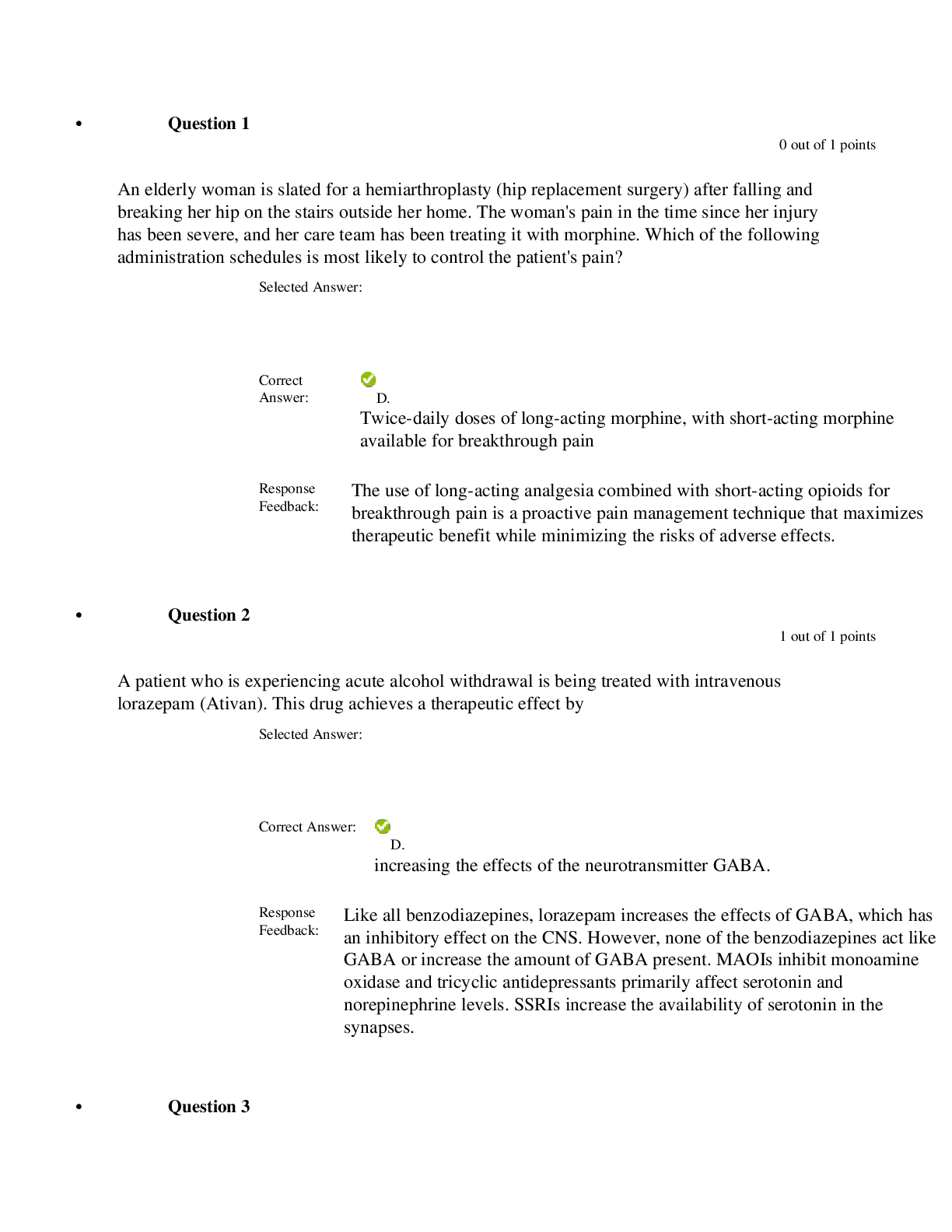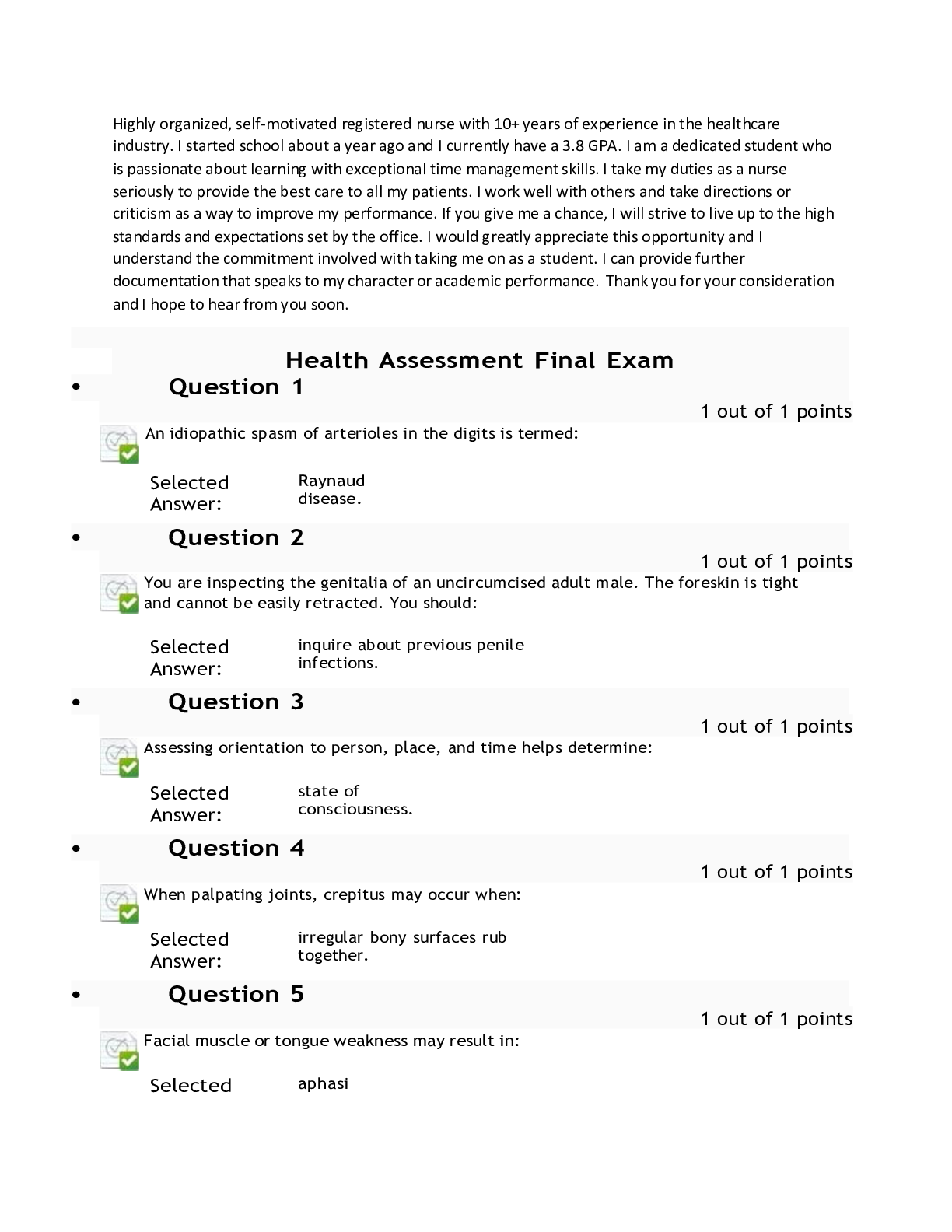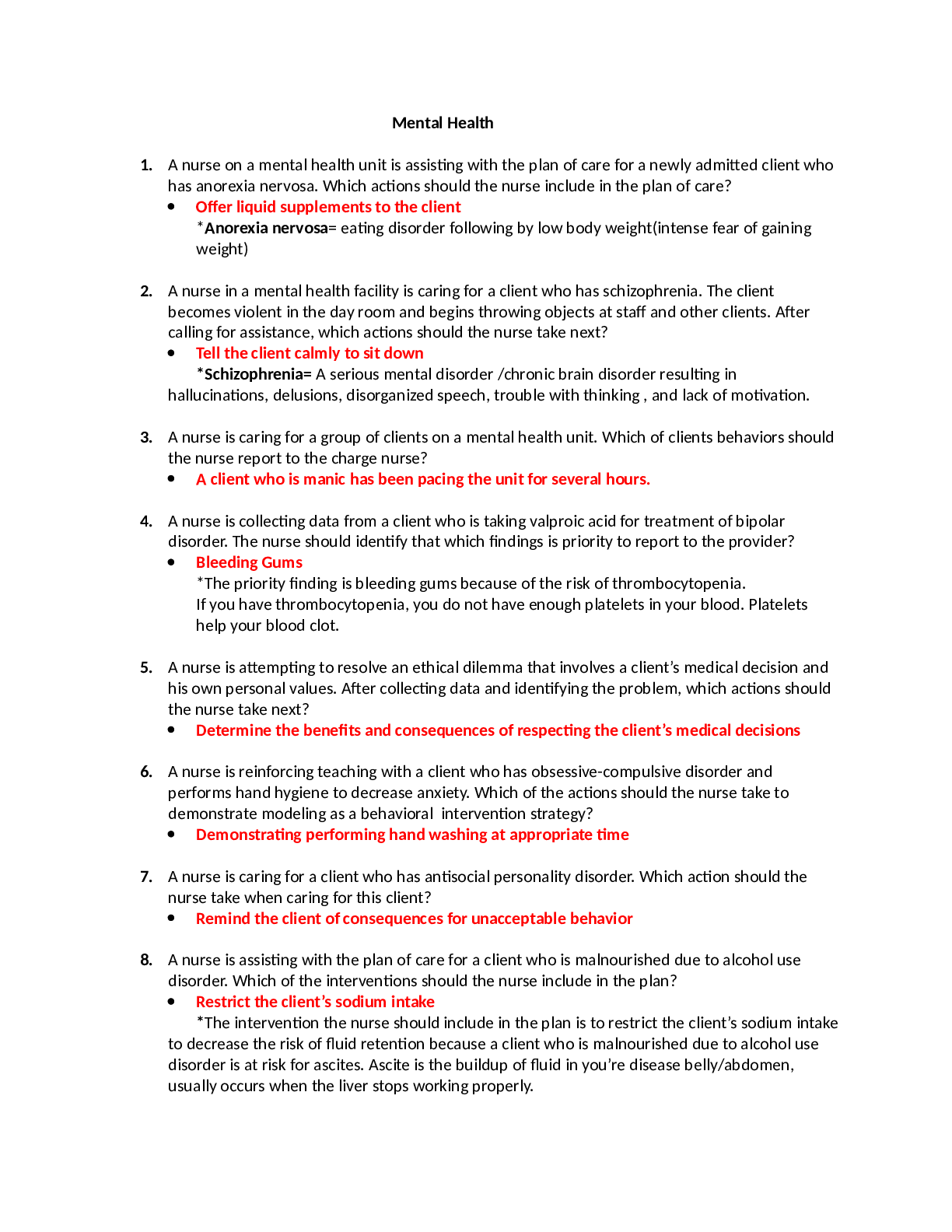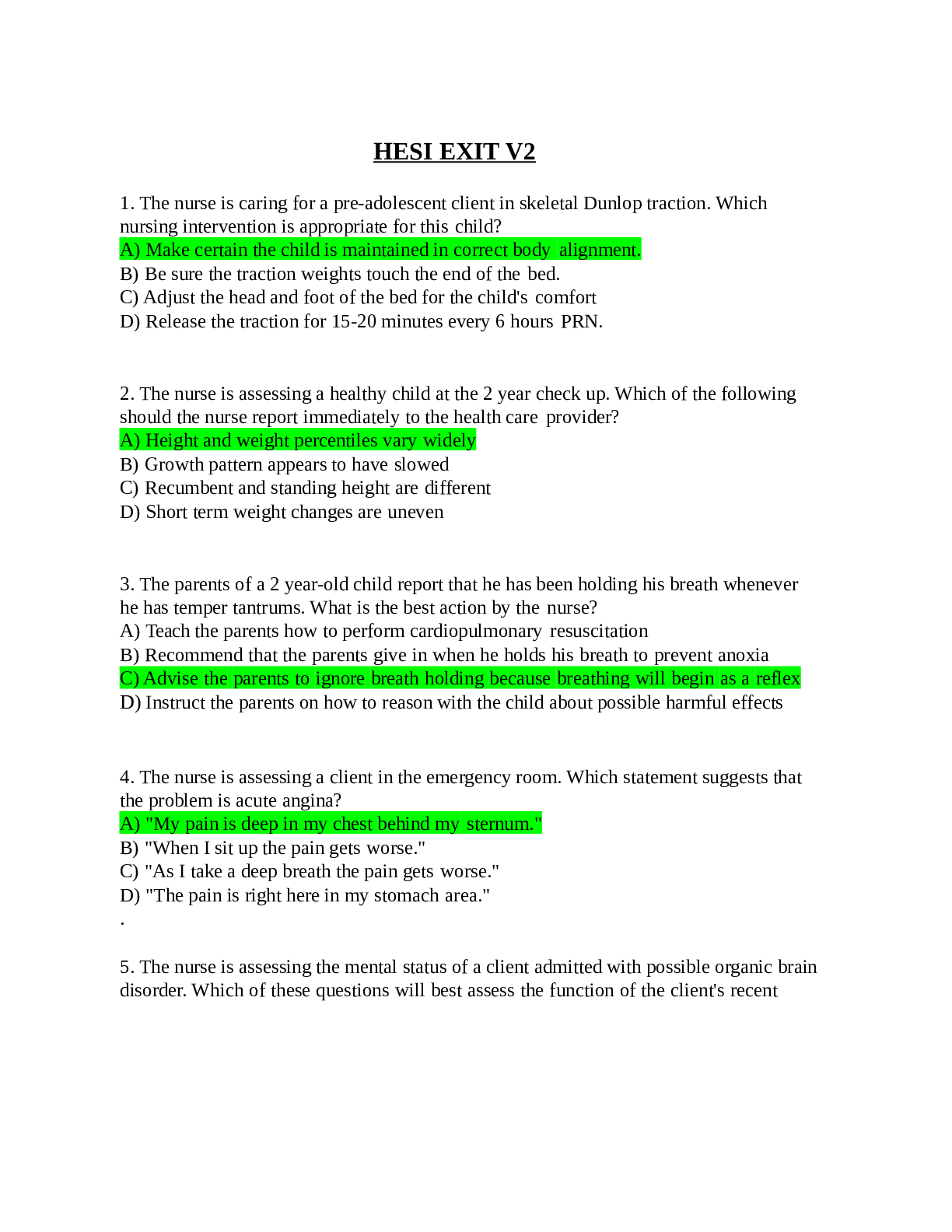BioChemistry > QUESTIONS & ANSWERS > BioChemistry Test Bank (All 23 chapters complete, Questions and Verified Answers (All)
BioChemistry Test Bank (All 23 chapters complete, Questions and Verified Answers
Document Content and Description Below
Contents Chapter 1 Introduction to Biochemistry 1 Chapter 2 Water 10 Chapter 3 Amino Acids and the Primary Structures of Proteins 27 Chapter 4 Proteins: Three-Dimensional Structure and Function 46... Chapter 5 Properties of Enzymes 65 Chapter 6 Mechanisms of Enzymes 85 Chapter 7 Coenzymes and Vitamins 104 Chapter 8 Carbohydrates 119 Chapter 9 Lipids and Membranes 137 Chapter 10 Introduction to Metabolism 153 Chapter 11 Glycolysis 169 Chapter 12 Gluconeogenesis, The Pentose Phosphate Pathway, and Glycogen Metabolism 185 Chapter 13 The Citric Acid Cycle 199 Chapter 14 Electron Transport and Oxidative Phosphorylation 213 Chapter 15 Photosynthesis 227 Chapter 16 Lipid Metabolism 241 Chapter 17 Amino Acid Metabolism 256 Chapter 18 Nucleotide Metabolism 269 Chapter 19 Nucleic Acids 284 Chapter 20 DNA Replication, Repair, and Recombination 300 Chapter 21 Transcription and RNA Processing 315 Chapter 22 Protein Synthesis 330 Chapter 23 Recombinant DNA Technology 348 Chapter 1 Introduction to Biochemistry 1) Which elements account for more than 97% of the weight of most organisms? A) C, H, N, Mg, O, S B) C, H, N, O, P, S C) C, H, N D) Fe, C, H, O, P E) Ca2+, K+, Na+, Mg2+, ClAnswer: B Page Ref: Section 2 2) Proteins in biological membranes may be A) porous. B) attached to the membrane surface. C) span the membrane. D) All of the above E) B and C only Answer: D Page Ref: Section 3 3) Which statement about cellulose is false? A) It is the most abundant polysaccharide in nature. B) Its monomers are joined by glycosidic bonds. C) It is present in the stems of flowering plants. D) The hydroxyl groups of neighboring cellulose molecules interact to form strong, insoluble fibers. E) It is a branched polymer of glucose. Answer: E Page Ref: Section 3 1 4) When Keq of a reaction = 1, then A) the forward reaction is faster than the reverse reaction. B) the reverse reaction is faster than the forward reaction. C) the forward and reverse reaction rate constants are equal. D) more products are formed than reactants. E) fewer products are formed than reactants. Answer: C Page Ref: Section 4 5) Which statement is true about a reaction with an equilibrium constant, Keq, equal to 1000? A) The forward rate constant is 1000 times greater than the reverse rate constant. B) The forward rate constant is 3 times greater than reverse rate constant. C) The forward rate constant is 1000 times smaller than the reverse rate constant. D) The forward rate constant is 3 times smallerthan the reverse rate constant. E) There is not enough information given to compare the forward and reverse rate constants. Answer: A Page Ref: Section 4 6) The study of the energy changes during metabolic reactions is called ________. A) bioinformatics B) metabodynamics C) thermometrics D) bioenergetics E) biological heat dynamics Answer: D Page Ref: Section 4 7) A spontaneous chemical reaction always has a ________ change. A) positive Gibbʹs free energy B) negative Gibbʹs free energy C) positive enthalpy D) negative enthalpy E) positive entropy Answer: B Page Ref: Section 4 2 8) Prokaryotes are valuable tools for biochemists because A) E. coli is well-studied and typical of prokaryotes. B) they contain as many genes as eukaryotic cells. C) many of their chromosomes are sequenced. D) they are not very diverse organisms. E) All of the above Answer: C Page Ref: Section 6 9) Which cellular component carries out oxidation reactions, some of which produce hydrogen peroxide? A) peroxisomes B) mitochondria C) chloroplasts D) lysosomes E) vacuoles Answer: A Page Ref: Section 8 10) Why is it important that the enzymes in lysosomes are more active at acidic pH than at neutral pH? A) Since lysosomes are primarily found in the stomach acid of mammals, their pH dependence allows for maximum efficiency for the digestion of foodstuffs. B) It prevents their diffusion out of the lysosomes. C) It maximizes the interaction with their substrates which are always bases. D) It prevents them from accidentally degrading the macromolecules in the cytosol. E) It allows for regulation of their uptake by the mitochondria. Answer: D Page Ref: Section 8 [Show More]
Last updated: 1 year ago
Preview 1 out of 362 pages
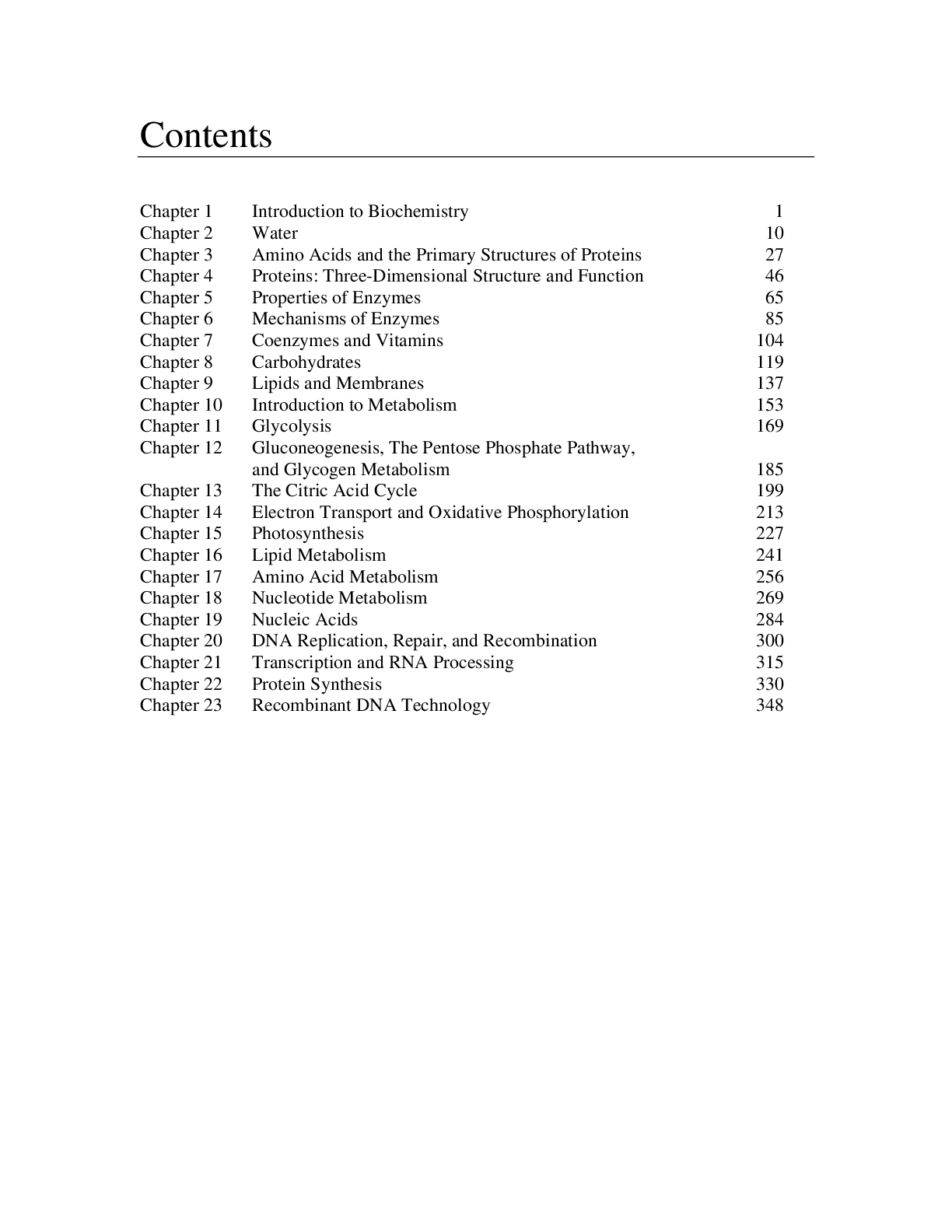
Reviews( 0 )
Document information
Connected school, study & course
About the document
Uploaded On
Aug 10, 2022
Number of pages
362
Written in
Additional information
This document has been written for:
Uploaded
Aug 10, 2022
Downloads
0
Views
180

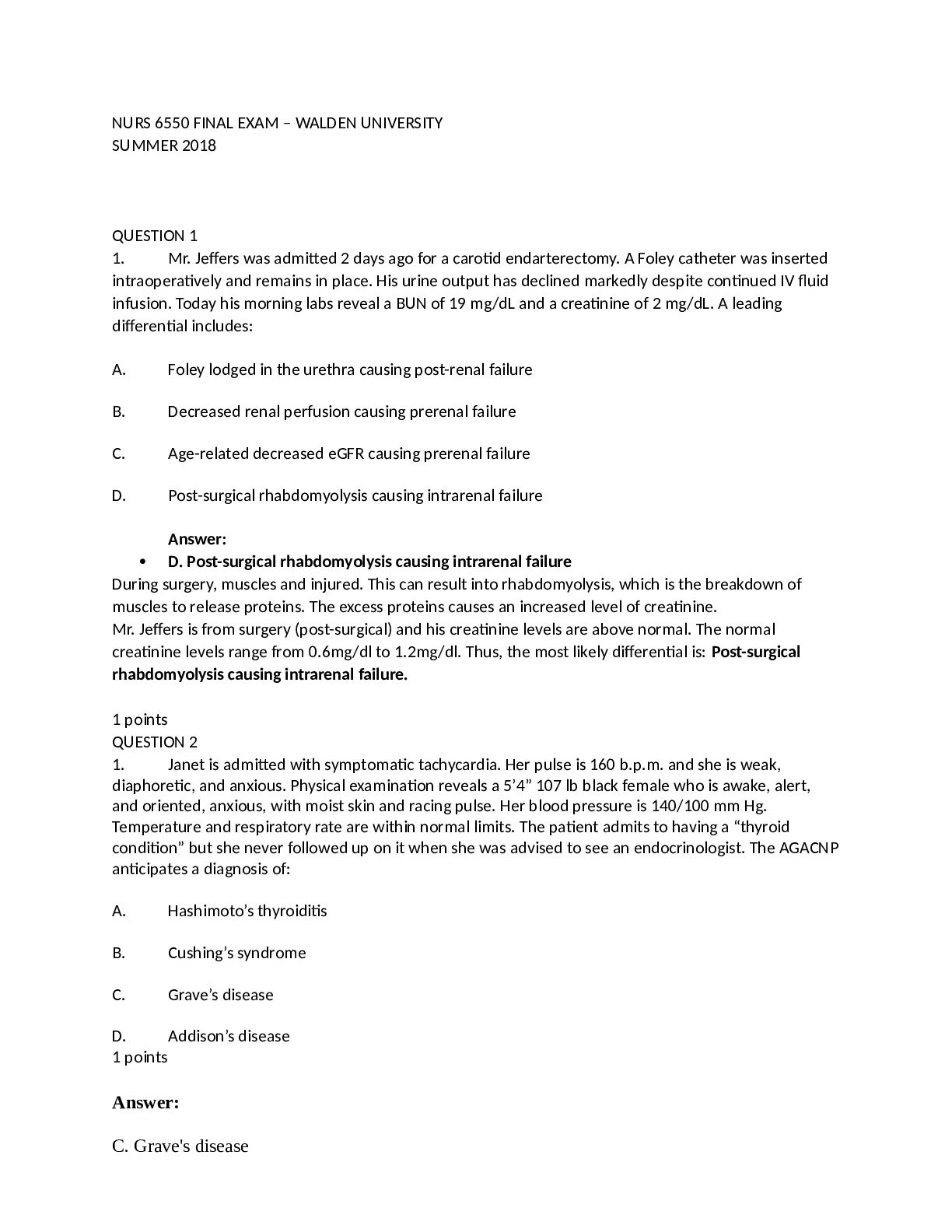
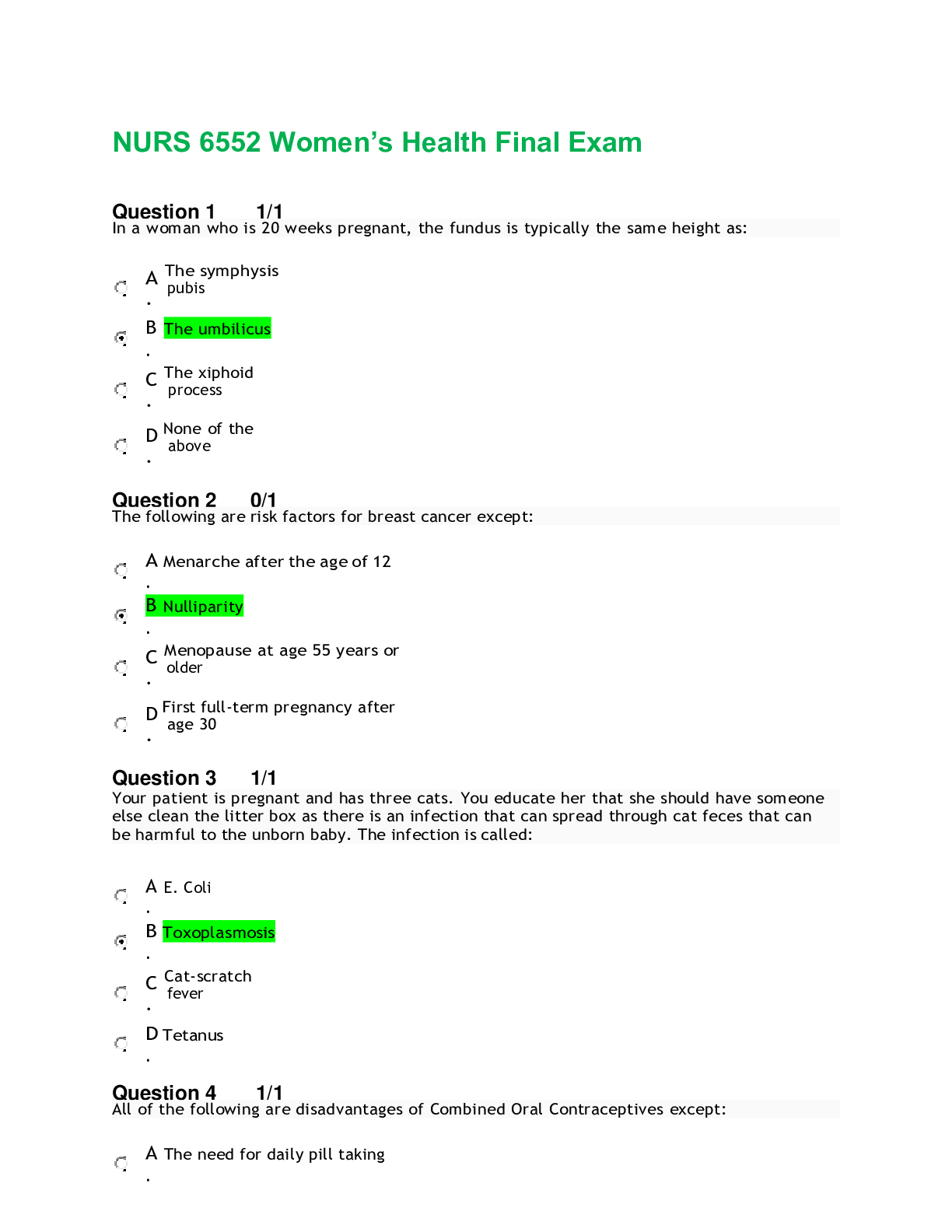
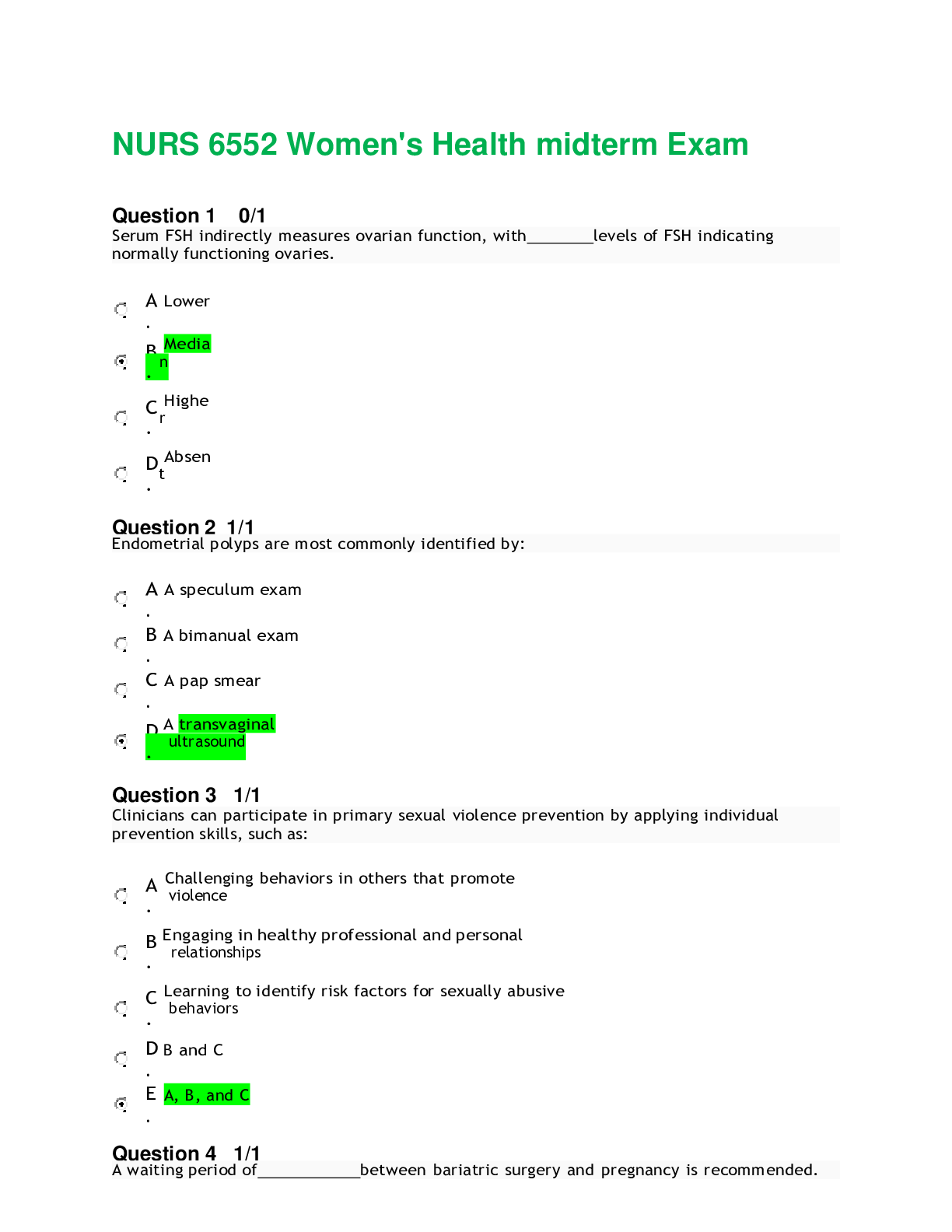
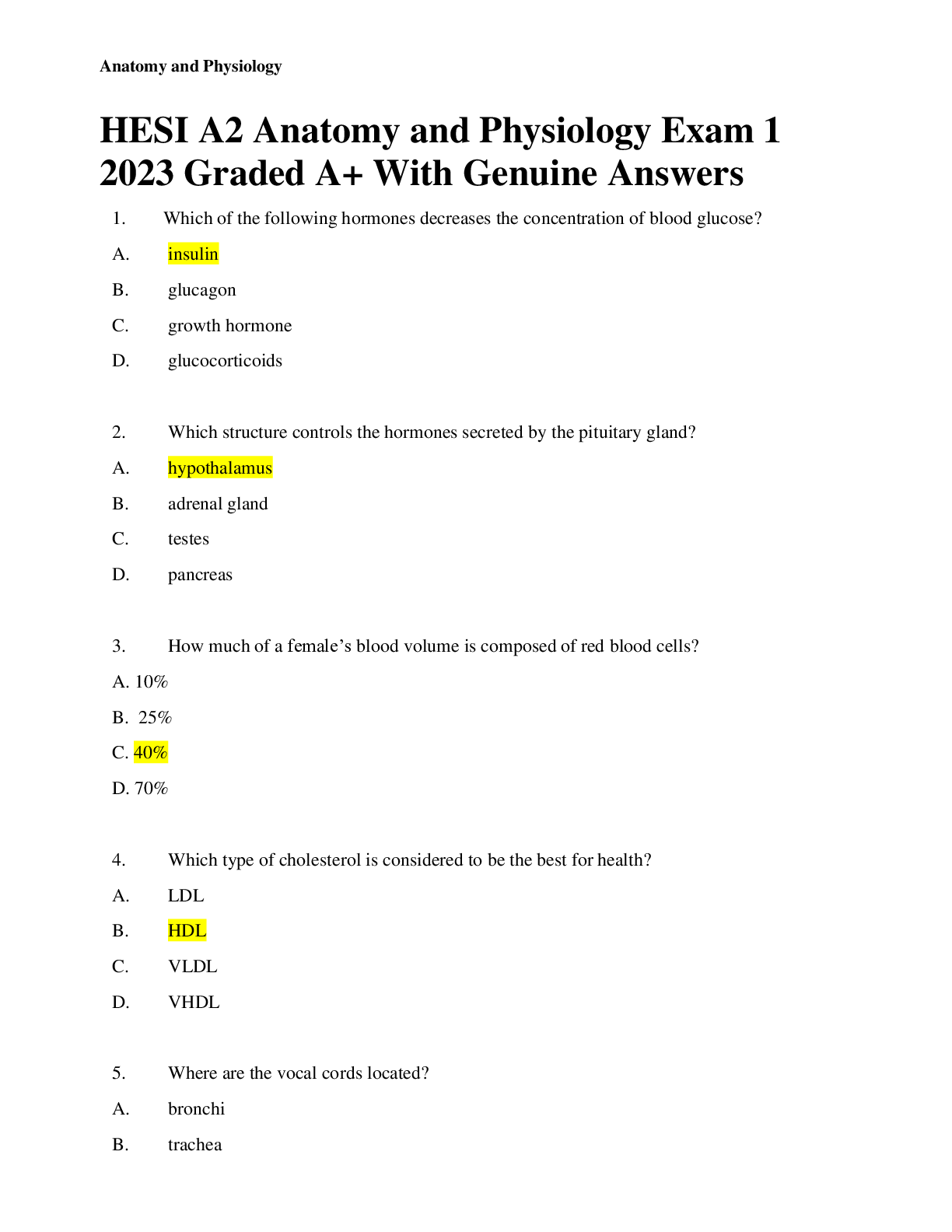
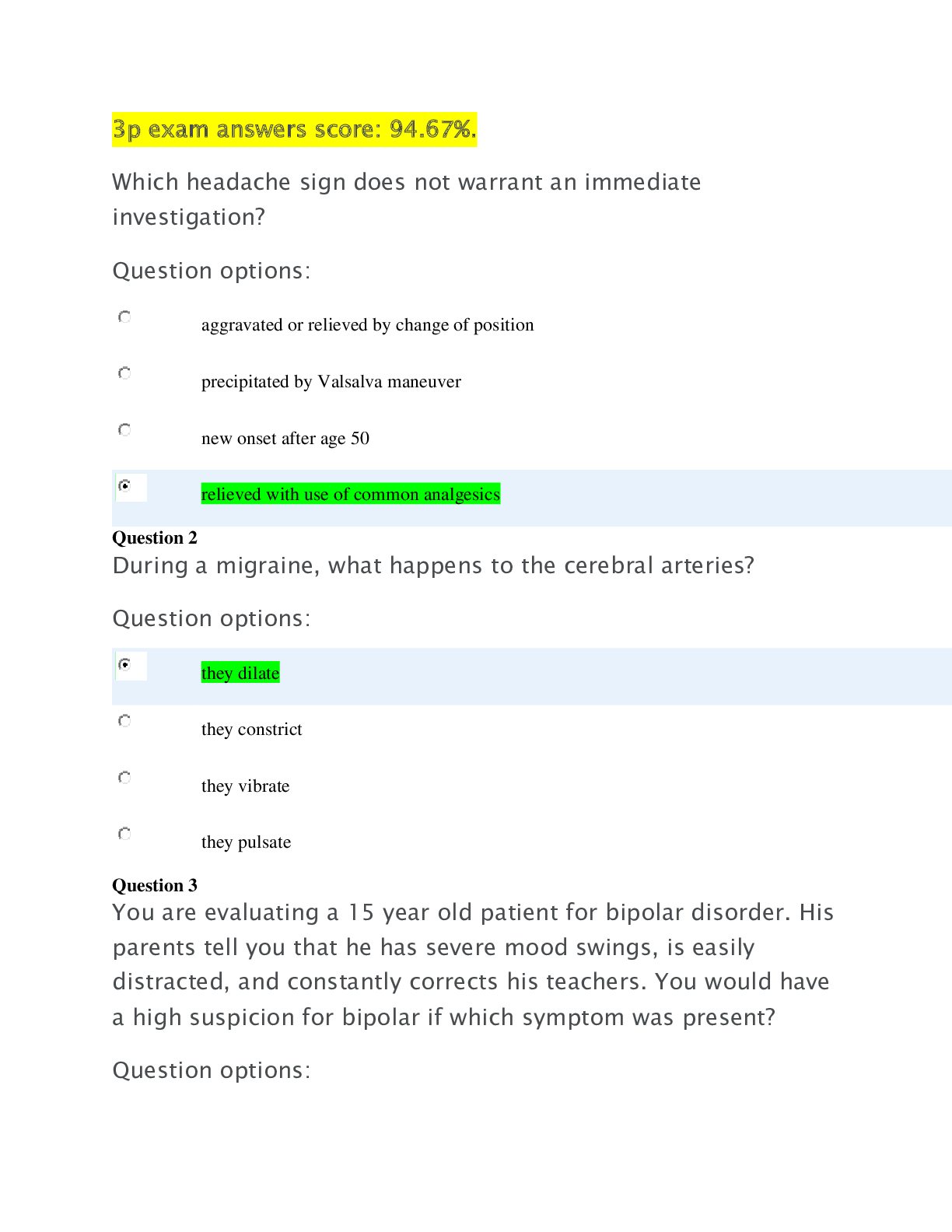

.png)

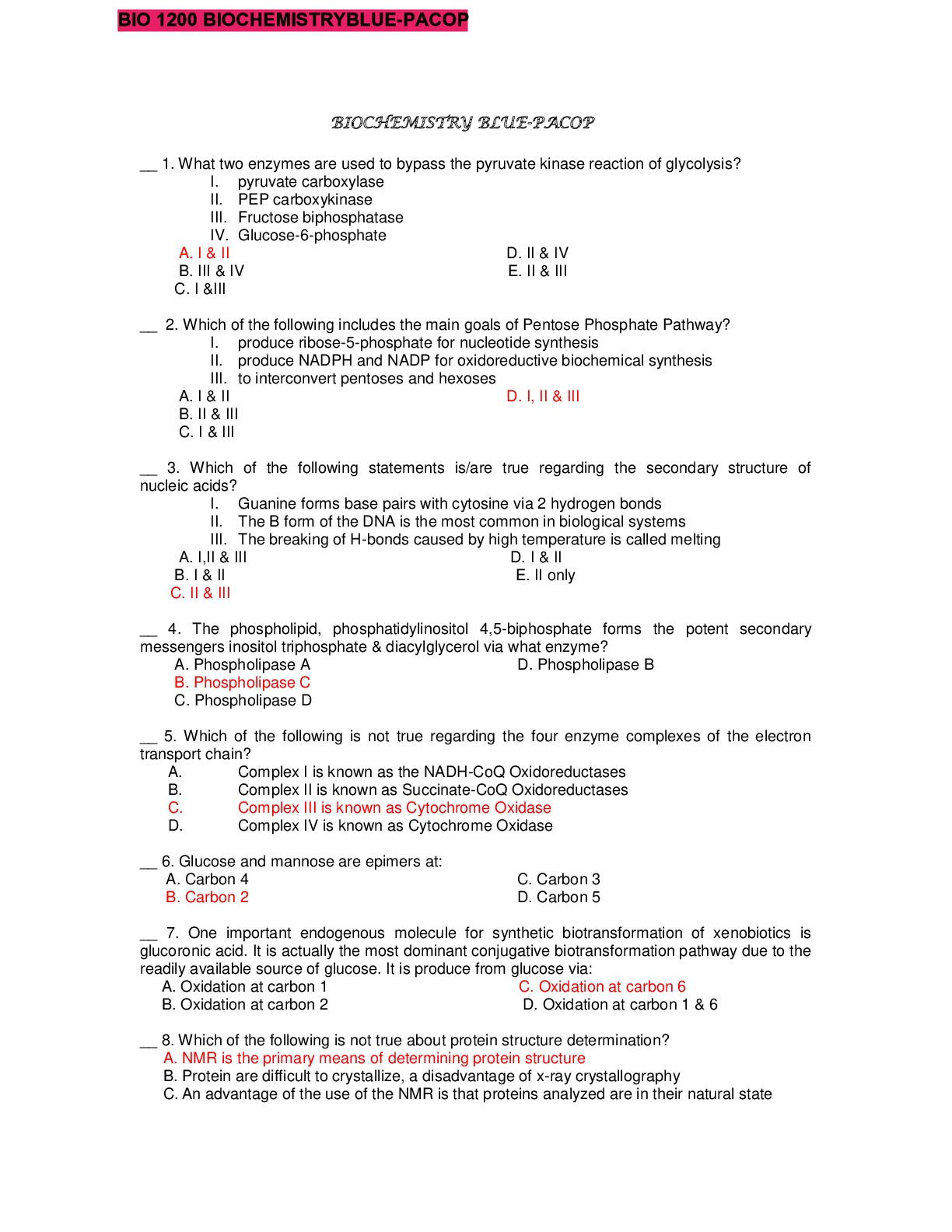
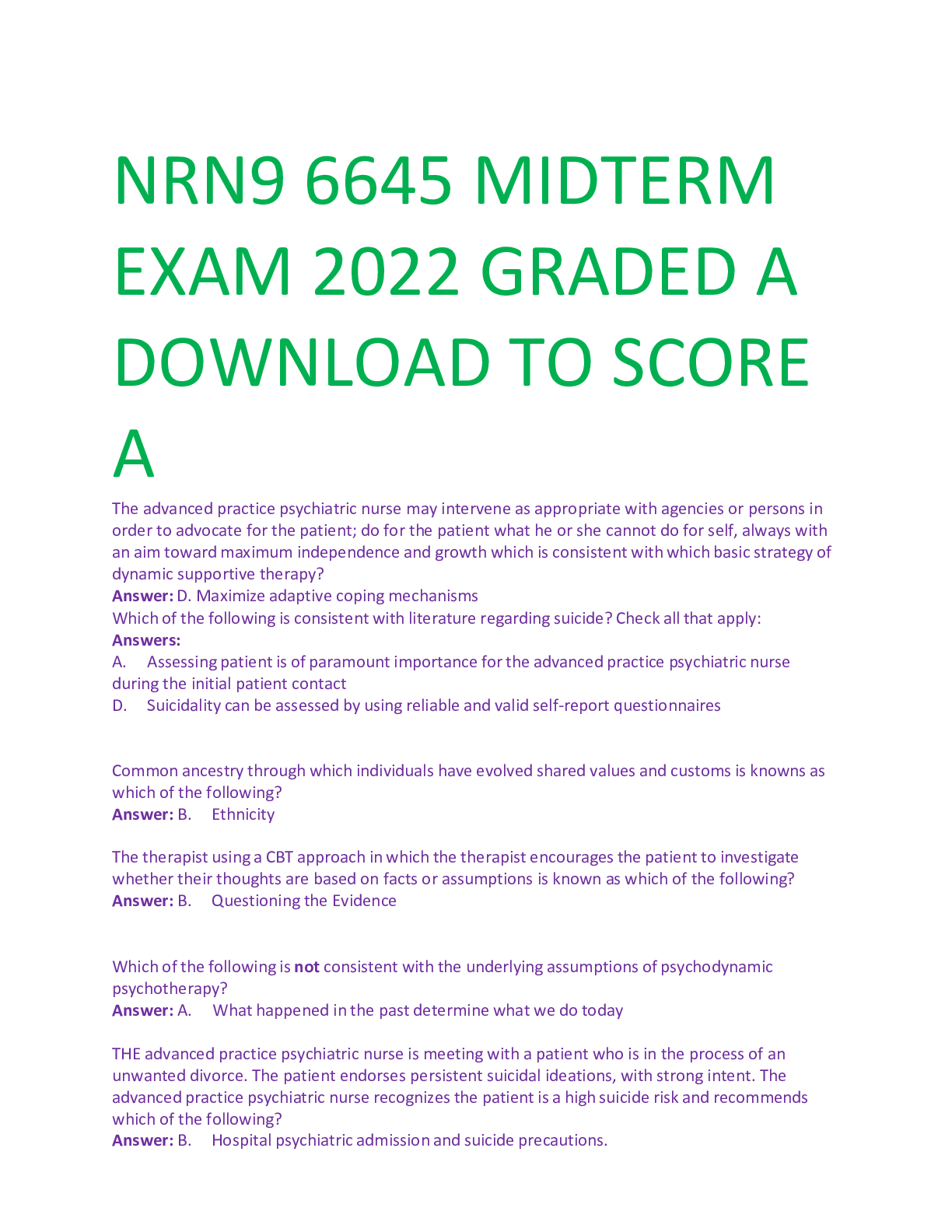
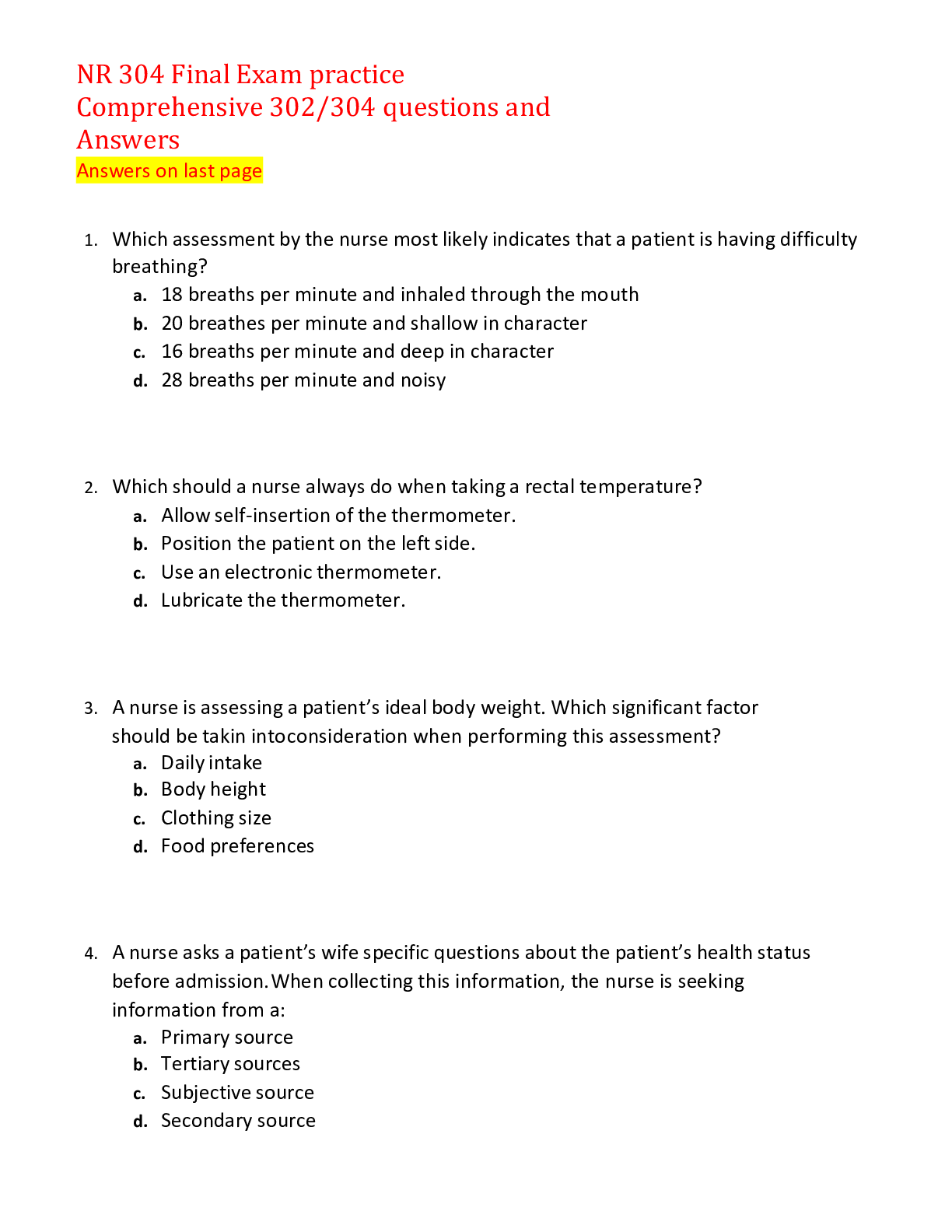
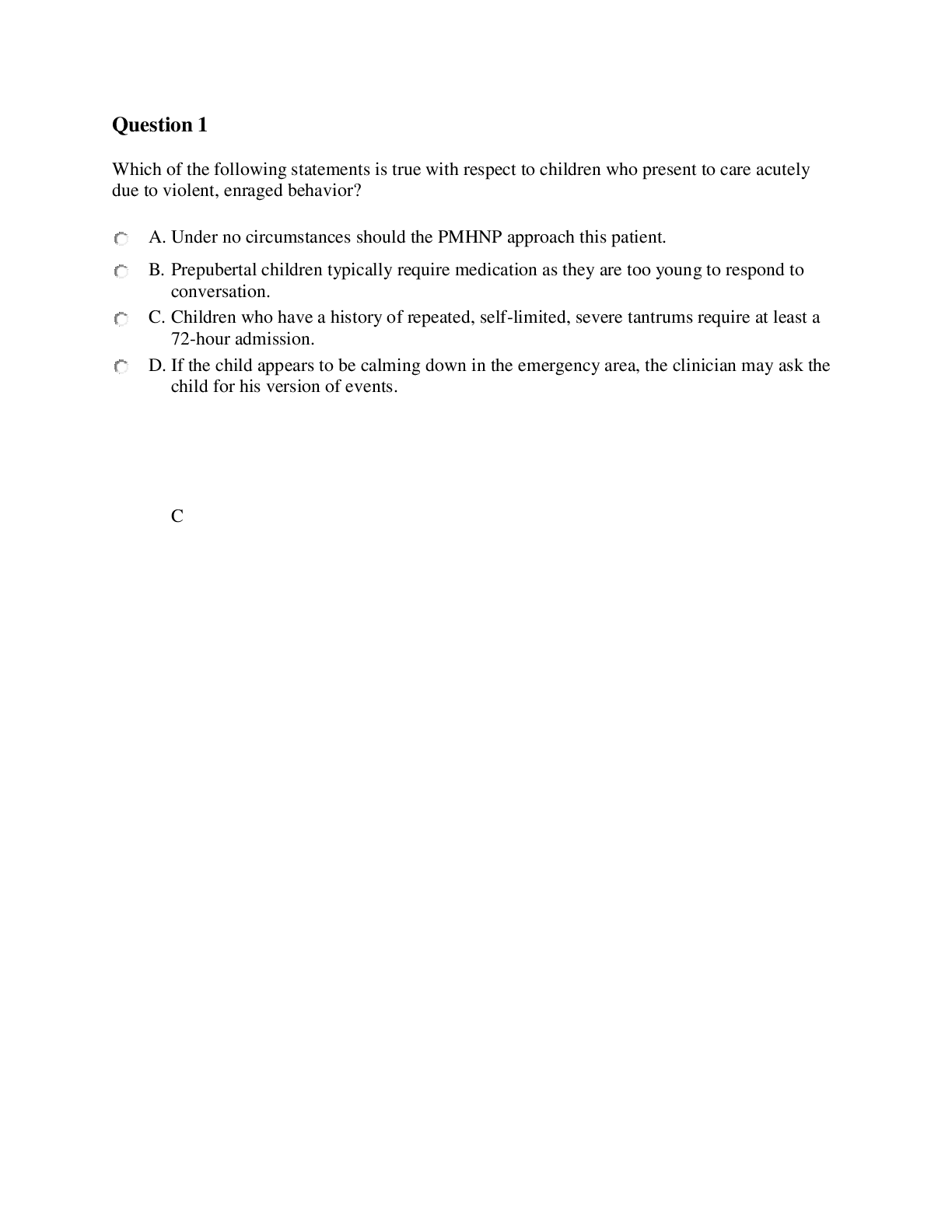
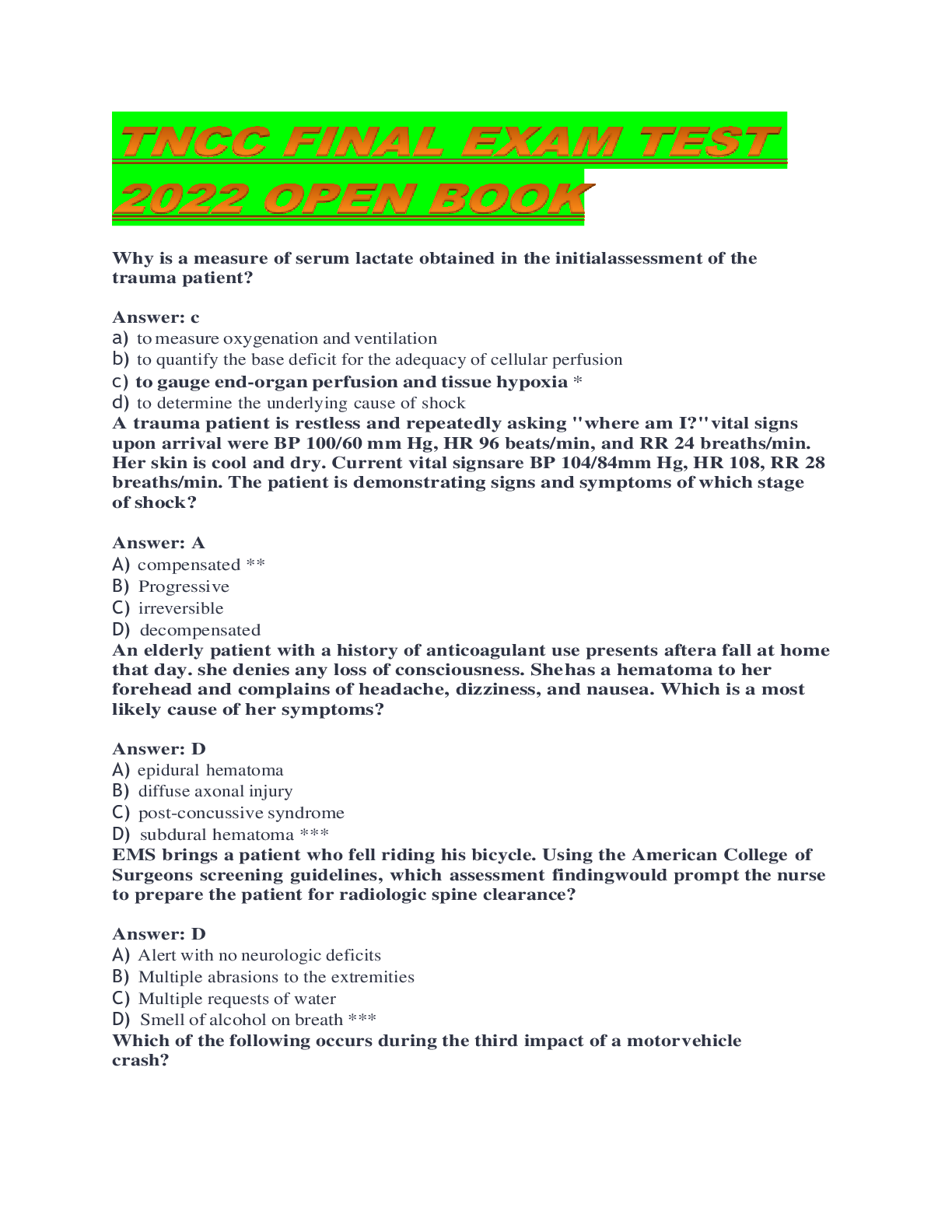
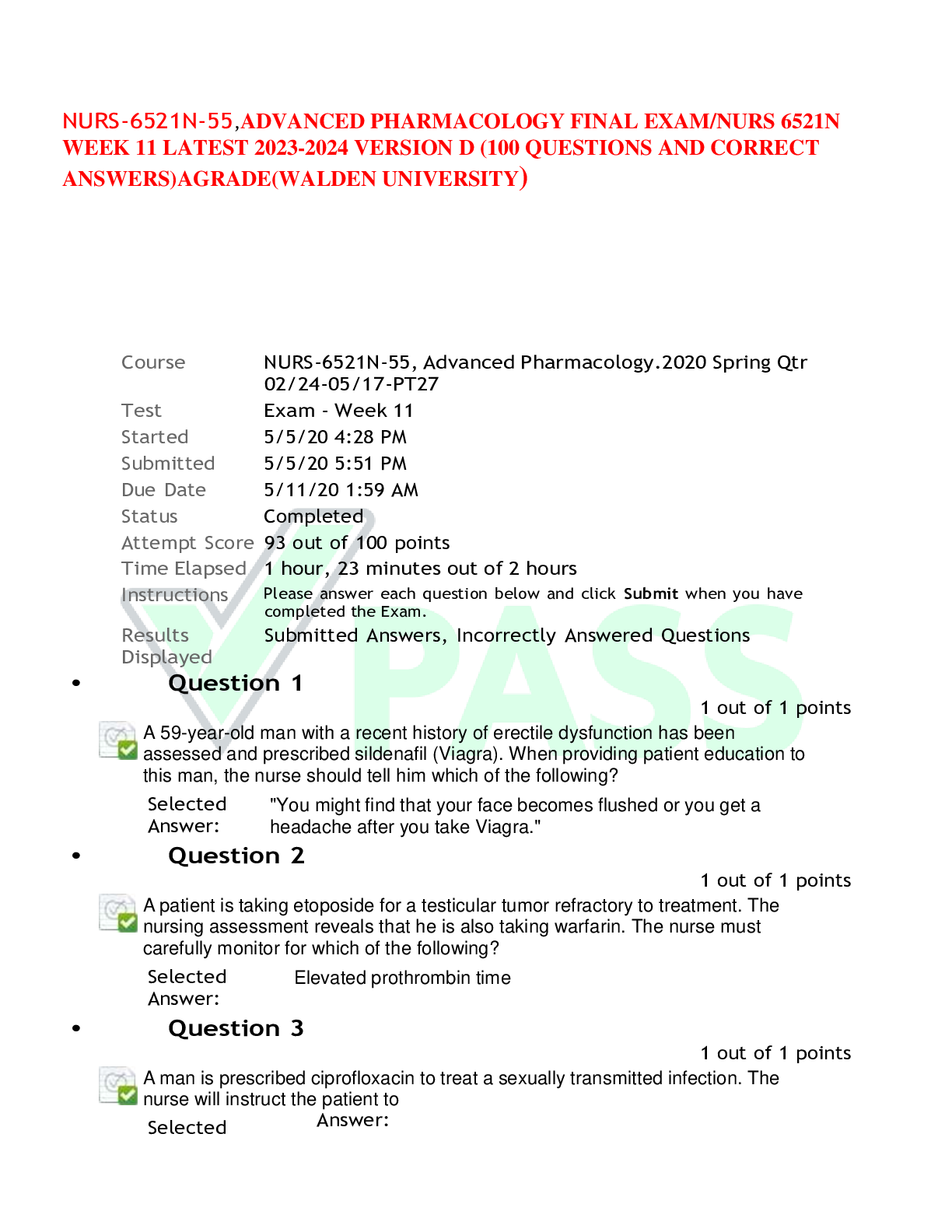



 HESI VI EXIT EXAM.png)
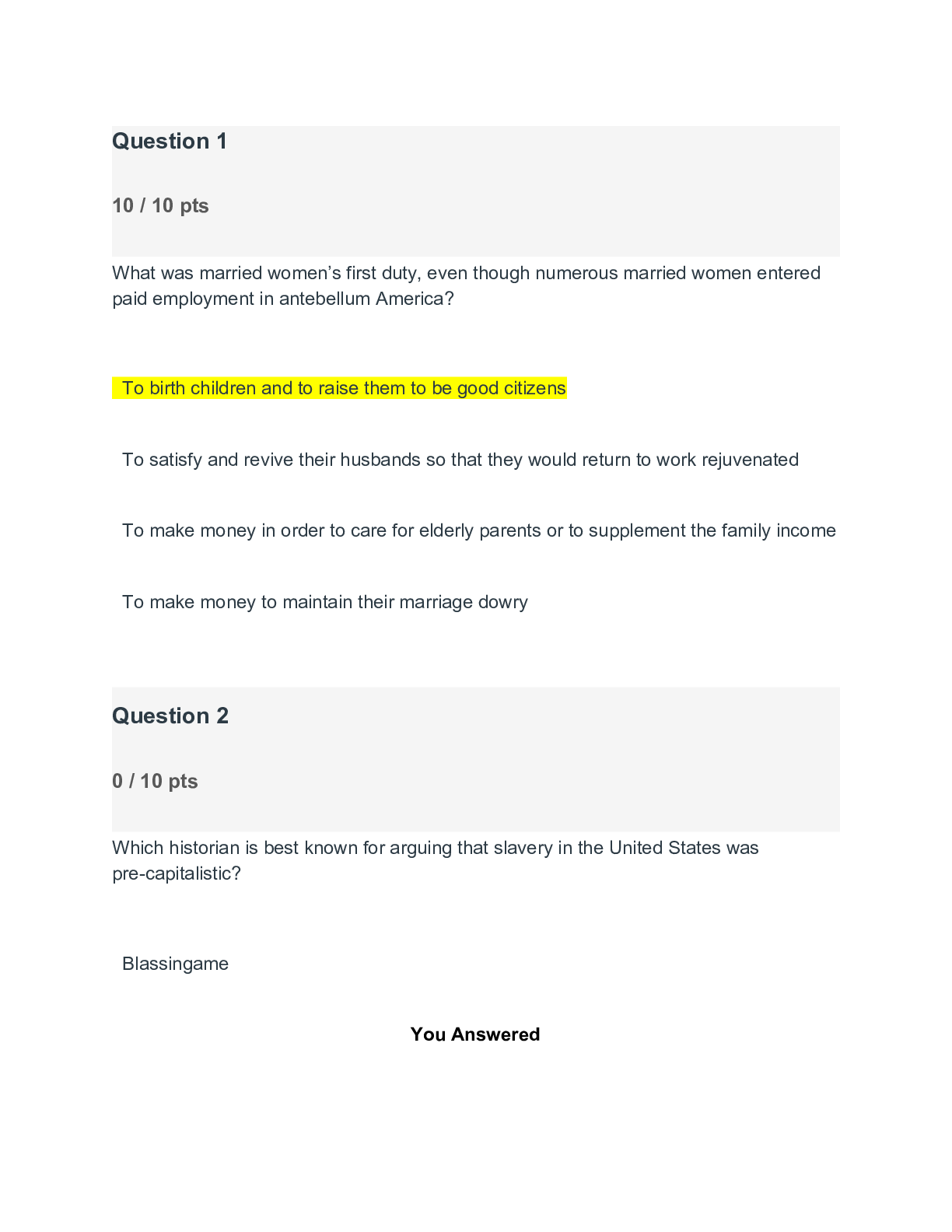
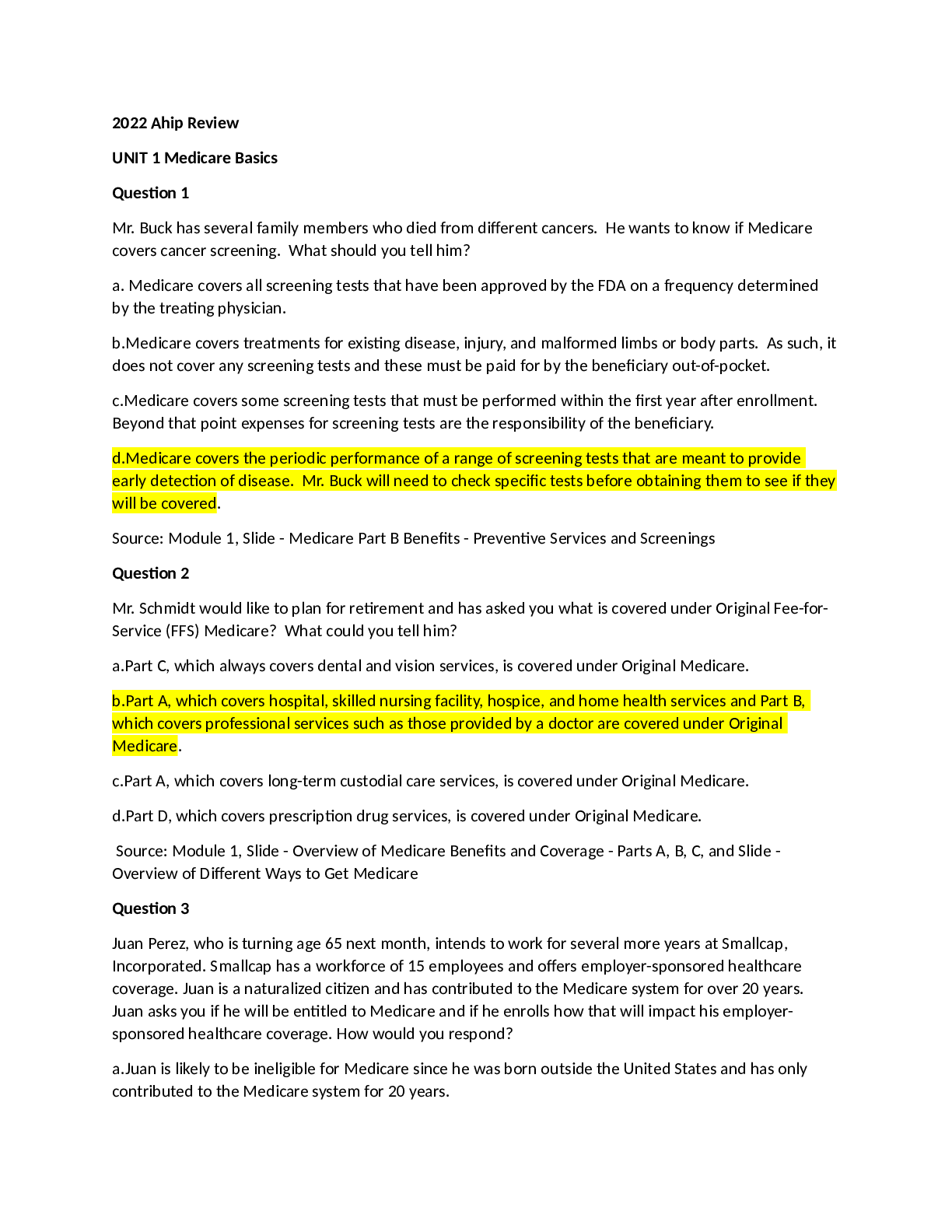
.png)
.png)
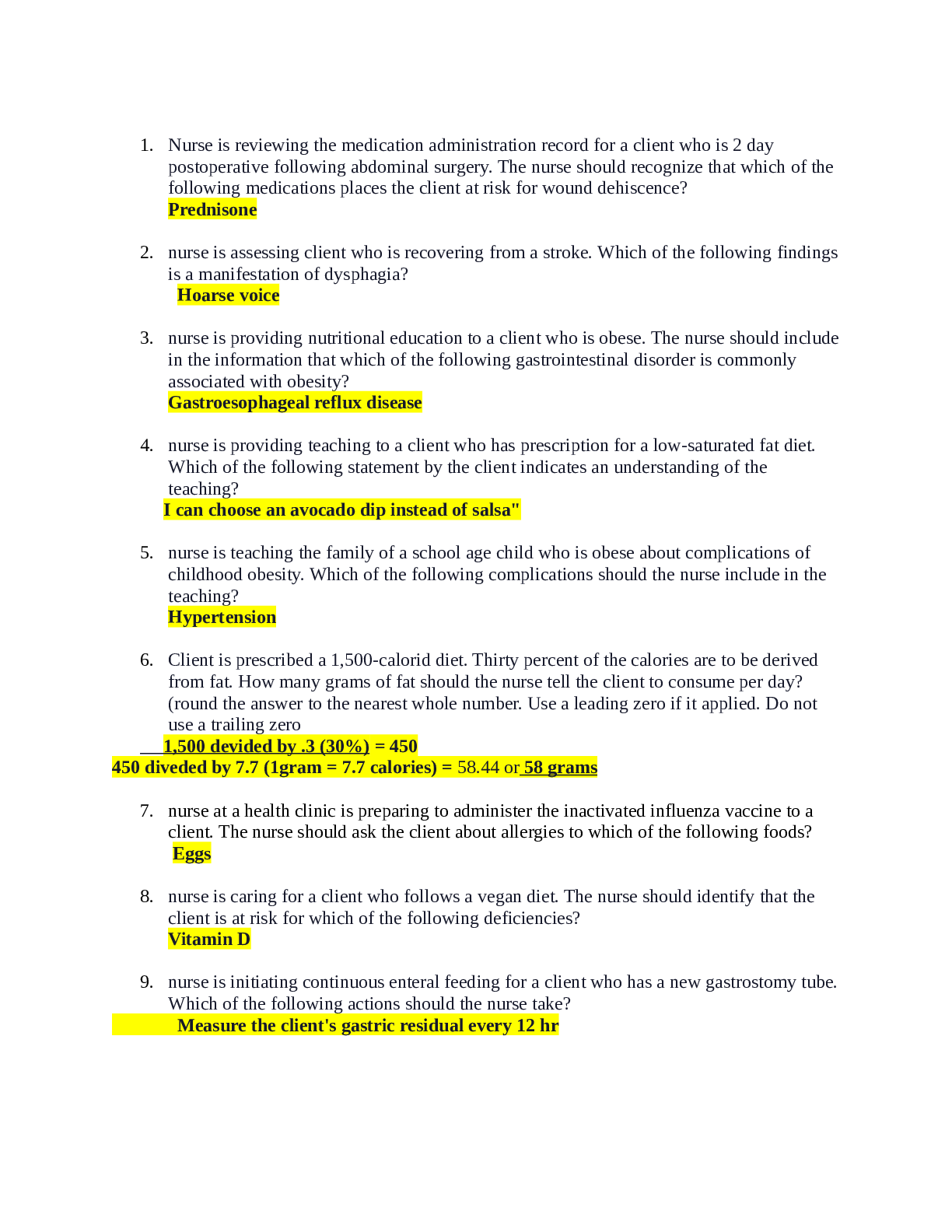
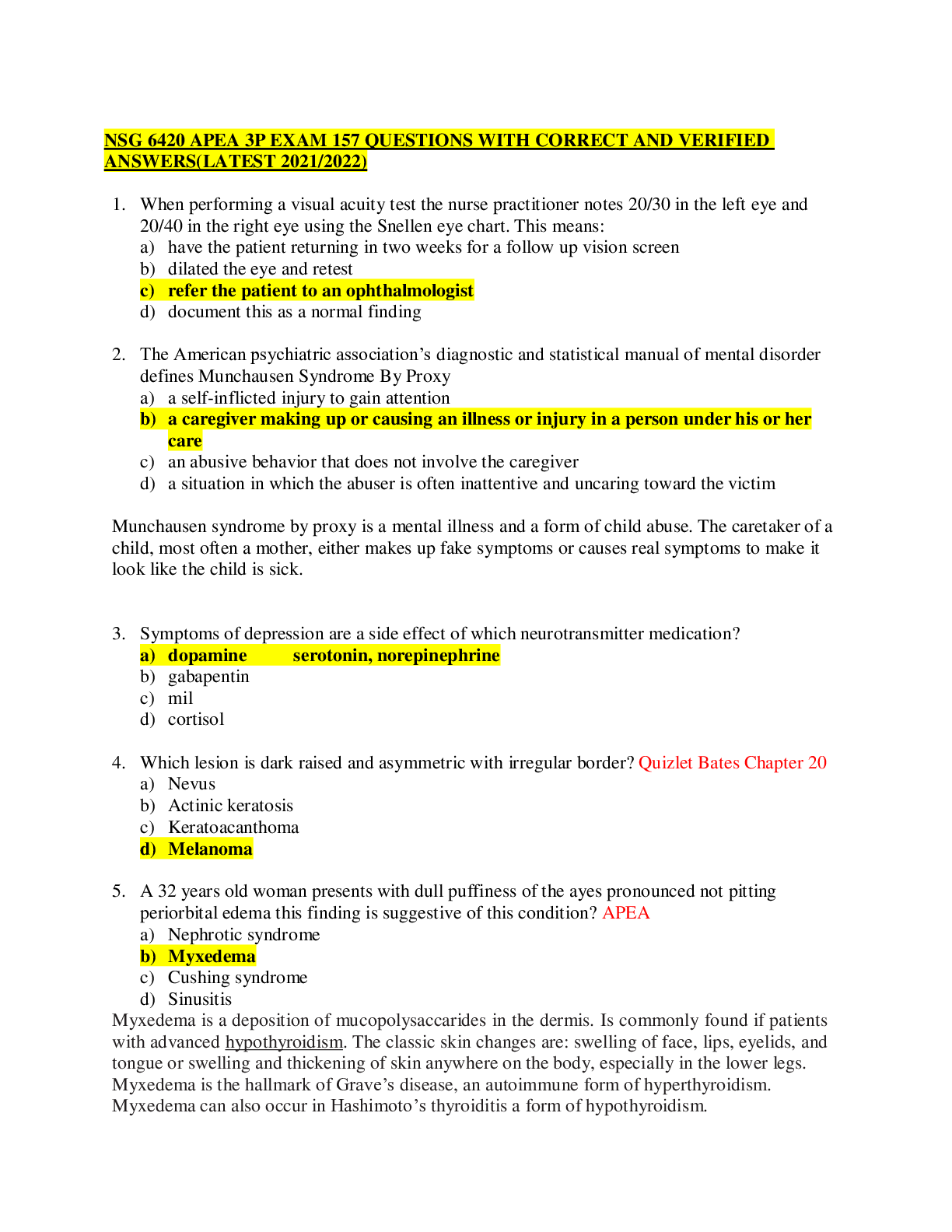


.png)
